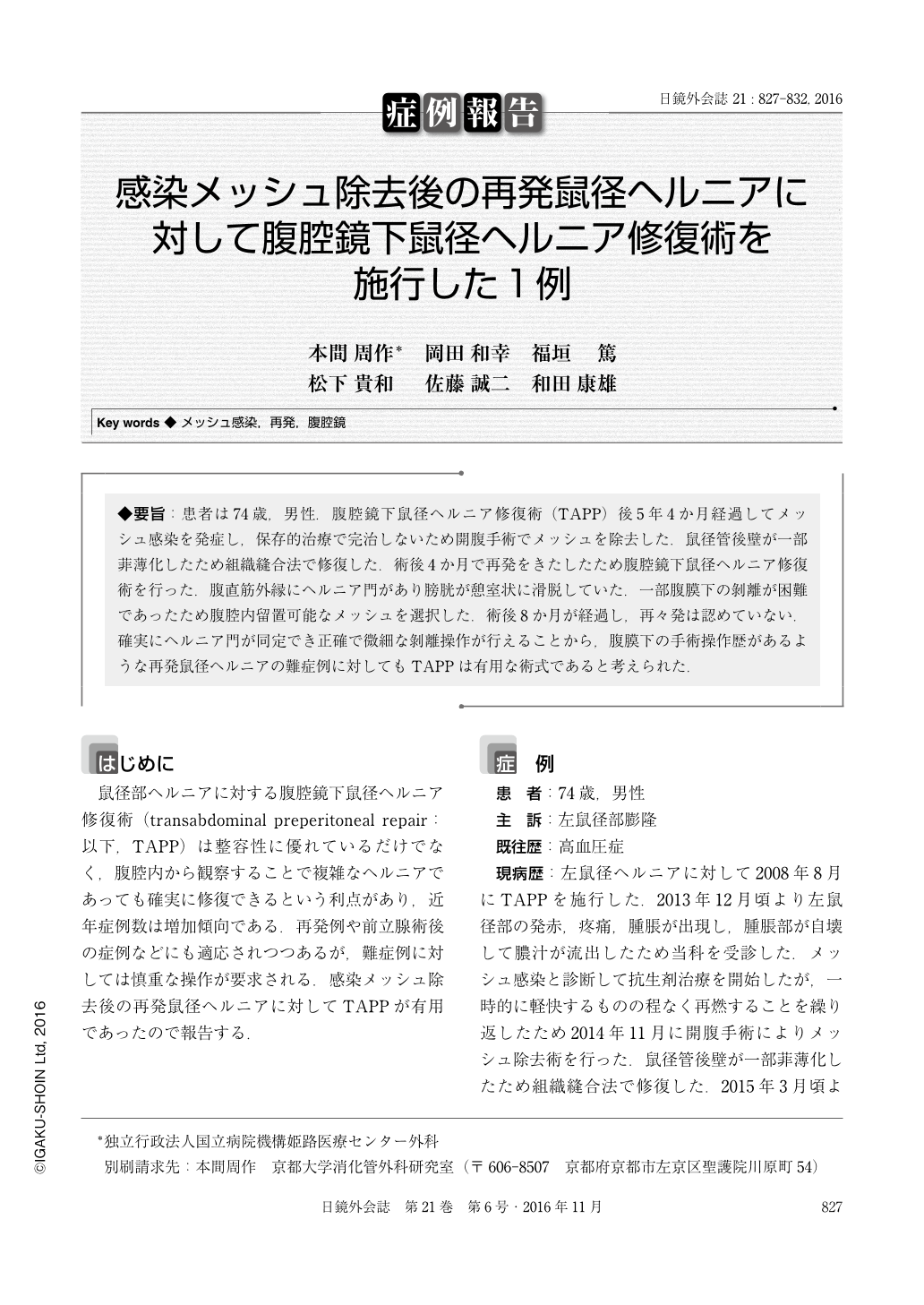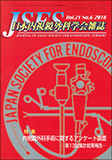Japanese
English
- 有料閲覧
- Abstract 文献概要
- 1ページ目 Look Inside
- 参考文献 Reference
◆要旨:患者は74歳,男性.腹腔鏡下鼠径ヘルニア修復術(TAPP)後5年4か月経過してメッシュ感染を発症し,保存的治療で完治しないため開腹手術でメッシュを除去した.鼠径管後壁が一部菲薄化したため組織縫合法で修復した.術後4か月で再発をきたしたため腹腔鏡下鼠径ヘルニア修復術を行った.腹直筋外縁にヘルニア門があり膀胱が憩室状に滑脱していた.一部腹膜下の剝離が困難であったため腹腔内留置可能なメッシュを選択した.術後8か月が経過し,再々発は認めていない.確実にヘルニア門が同定でき正確で微細な剝離操作が行えることから,腹膜下の手術操作歴があるような再発鼠径ヘルニアの難症例に対してもTAPPは有用な術式であると考えられた.
A 74-year-old man contracted a late-onset mesh infection following the laparoscopic transabdominal preperitoneal repair(TAPP) of a left inguinal hernia. We performed mesh resection because the mesh infection could not be cured completely by antibiotic treatment. After removing the mesh and fixation materials, we strengthened the posterior wall of the inguinal canal by suturing the peripheral connective tissue. Four months after mesh resection, he experienced a recurrence of left inguinal hernia. We performed TAPP again. A hernia orifice was noted at the border of the rectus abdominis, and part of the bladder had slipped down from the orifice. We were unable to dissect part of the subperitoneal area due to the postoperative scar. We repaired the hernia using mesh which we were able to expose intraperitoneally. The patient was discharged five days after surgery without any complications. There were no signs of a second recurrence of inguinal hernia as of eight months after the surgery. Because we can clearly recognize the hernia orifices and perform accurate and fine operation utilizing laparoscopy, we believe that TAPP is therefore a useful procedure for performing inguinal hernia in patients with a surgical history of subperitoneal tissue dissection.

Copyright © 2016, JAPAN SOCIETY FOR ENDOSCOPIC SURGERY All rights reserved.


